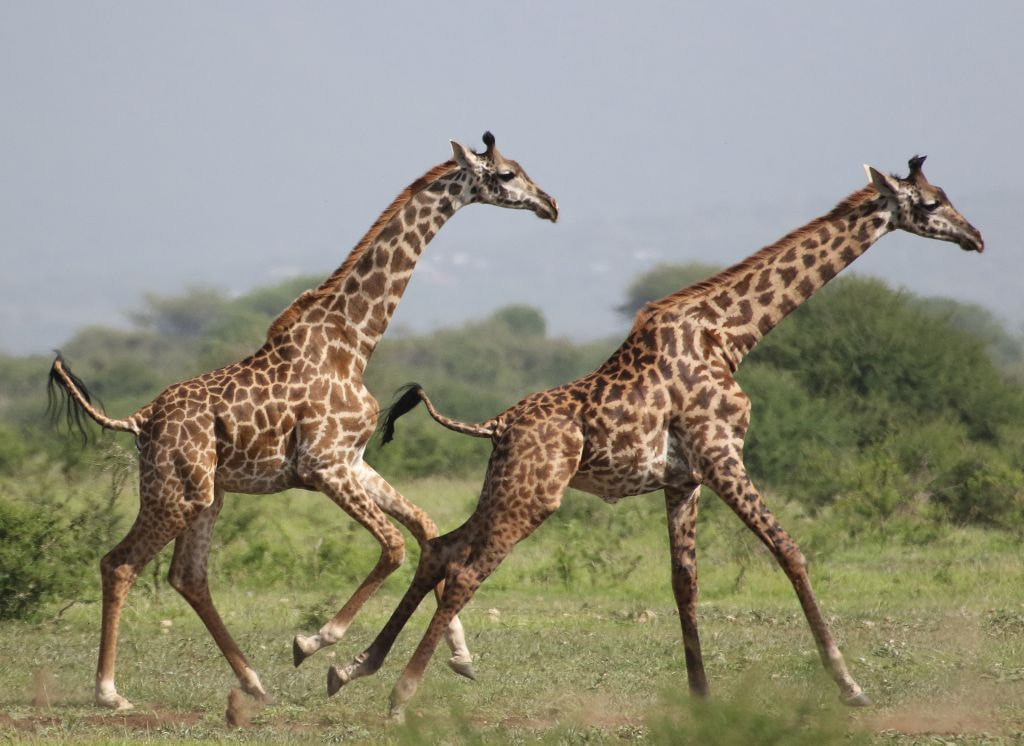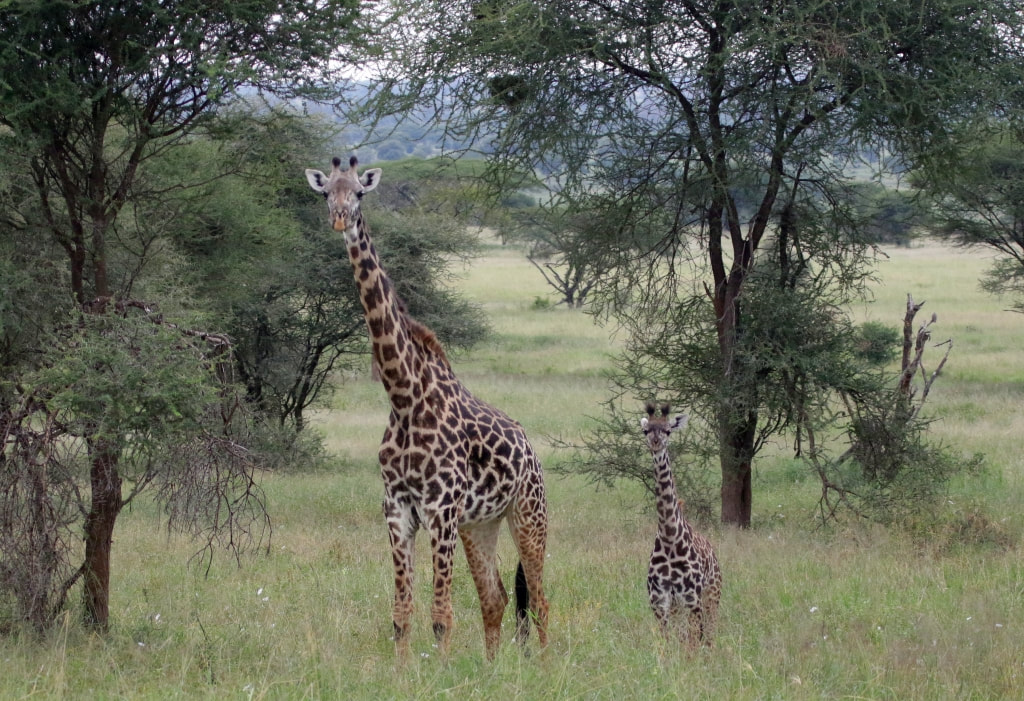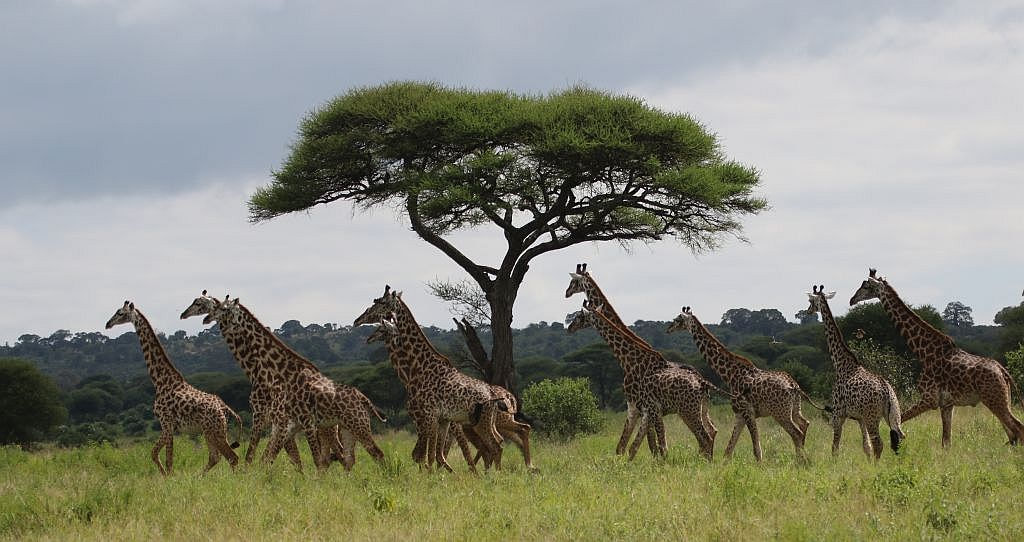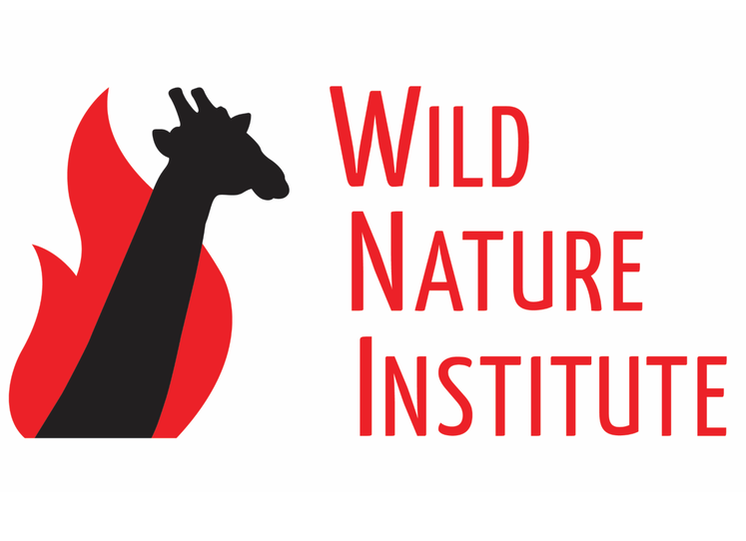|
Dispersal, the process where animals reaching sexual maturity move away from family, is important for maintaining genetic diversity and is key to the long-term persistence of natural populations. For most animals, this involves having to make risky journeys into the unknown in the hope of finding new communities in which to settle and reproduce. However, many animal societies—including those of humans—have structured social communities that overlap in space with one-another. These potentially provide opportunities for maturing individuals to disperse socially without having to make large physical displacements. New research published today by Wild Nature Institute scientists and colleagues in the Journal of Animal Ecology shows that this strategy is employed by young dispersing giraffes. The process of moving away from family is known as natal dispersal. Dispersal is a fundamental biological process that has been shown to reduce the chances of mating with a relative, ensuring that individuals have healthy offspring. However, dispersal is first and foremost a social process. Nevertheless, it has been mostly studied as a spatial process because in most animals, families defend physical areas excluding others, forcing young to have to leave this area to establish their own family. A research team, led by University of Zurich (UZH) postdoctoral research associate and WNI principal scientist Dr. Monica Bond, tested whether animals that live in structured societies comprising social communities that overlap in space with one another could disperse simply by switching communities. Doing so would avoid the risks of moving through the unknown. The researchers studied a large population of hundreds of giraffes in northern Tanzania. Using data on group composition collected over a huge 2200 km squared area, the team found that most male giraffes leave home once they reach reproductive maturity, and that a significant proportion of these achieve their dispersal by simply switching to new social communities, thereby avoiding the risks of moving far from home. On the other hand, most young female giraffes remained within the same community into which they were born. While sex differences in natal dispersal are well established in animals, this study is amongst the first to demonstrate how living in a structured society provides a unique opportunity for maturing individuals to find a new social community without having to move to new areas. Complex Giraffe Societies The team of scientists from UZH and Penn State University previously documented that the adult female giraffes form distinct social communities. The membership to these communities, comprising about 60 to 90 individual females, is very stable over time, despite social groups that are made up of these members merging and splitting throughout each day. They found that these social dynamics have two major consequences. The first is that females maintain enduring social bonds with other females in their community, with bonds likely to last over their entire lifetimes. The second is that these communities are completely structured socially, with different communities using the same physical space. Thus, while individuals from different communities might occasionally encounter one another, they rarely, if ever, form groups together. “This led us to wonder whether maturing young giraffes might forge relationships with the members of nearby female communities that are different from their birth community, to avoid accidentally mating with their relatives, without having to travel long distances into unknown and possibly dangerous places,” says Dr. Damien Farine, co-author and UZH Eccellenza Professor. What they found was that, like in most other mammals, dispersal was predominately done by males, with dispersers leaving at about 4 years of age. “The key question was then to ask what strategies young males used to find new communities in which they could search for unrelated mates or avoid conflict with relatives,” says UZH professor Dr. Barbara König, senior author of the study. Females Stay in the Same Social Networks, Males Switch The team used social network analyses to quantify the social communities of adult females, and then monitored which community 67 male and 70 female calves associated with as they matured over a 7-year period. The data revealed that while four out of five of young male dispersers switched to social communities different from their birth communities, about one in four of the male dispersers switched communities while staying relatively close their birth site. In other words, they were able to disperse without having to move far at all. “This type of social dispersal, where males remained close to home but joined different female communities, would not be detected if only spatial movements were measured,” says Bond. Giraffes may not be unique in being able to disperse socially without having to move away from home. In many other species, including dolphins, elephants, and bats, researchers have reported merging and splitting of groups—called ‘fission-fusion’—within a larger, more stable social community. “It would be interesting to see if dispersing socially within the same physical space is a common strategy that is employed in species that live in societies with many overlapping social communities” Bond says. “Given the importance of maintaining healthy populations, the more we understand the natal dispersal process, the better we can help conserve wildlife.” According to giraffe expert Dr. Fred Bercovitch, who was not part of the study: “This research has crucial implications for the conservation of giraffes because it demonstrates that the preservation of genetic diversity in giraffes requires saving large ecosystems that allow animals to disperse into different communities, and not the translocation of a handful of giraffes to a new area, where breeding opportunities are limited.”
1 Comment
Pam
9/22/2021 05:15:00 am
This is fascinating!
Reply
Your comment will be posted after it is approved.
Leave a Reply. |
Science News and Updates From the Field from Wild Nature Institute.
All Photos on This Blog are Available as Frame-worthy Prints to Thank Our Generous Donors.
Email Us for Details of this Offer. Archives
July 2024
|
|
Mailing Address:
Wild Nature Institute PO Box 44 Weaverville, NC 28787 Phone: +1 415 763 0348 Email: [email protected] |
|




 RSS Feed
RSS Feed
